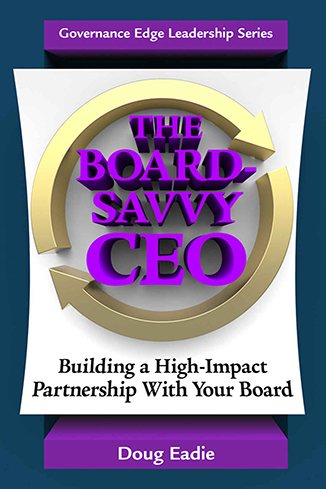In my experience, the nonprofits that thrive and grow over the long run are headed by chief executive officers who devote at least 75 percent of their time on the average to two critical functions: governance – developing and supporting the governing board (around 25 percent of their time); and external relations – image building and stakeholder relations (around 50 percent of their time). In my work with nonprofit organizations I define external stakeholders as organizations and institutions with which it makes sense for a nonprofit to build and maintain a relationship because something important is at stake, for example: financial support (foundations; government agencies); political support (elected officials); and image/reputation (print and broadcast media).
The podcast that Joe Marinucci, President & Chief Executive Officer of the Downtown Cleveland Alliance, recorded for this blog – as part of our ongoing examination of nonprofit business models – describes the creation of the Alliance. What I think most readers will find especially interesting about Joe’s fascinating creation story is the way it ties together the governance and stakeholder relations functions. Indeed, the very existence of the Alliance depended on Joe’s transforming critical stakeholders – for example, downtown property owners and neighborhood-based organizations – into real OWNERs of the alliance. How? By allocating seats on the new Alliance Board of Directors to stakeholder representatives, who, by definition, assumed responsibility for such classic ownership functions as setting strategic directions and operational targets, adopting the annual budget, and assessing operational performance.
As Joe’s account of the creation of the Downtown Cleveland Alliance illustrates, CEOs must at critical times play a hands-on role in the stakeholder relations function. If they aspire to make a significant difference – such a creating a new nonprofit organization – they can’t merely delegate building relationships with key stakeholders to one or more executive team members, and while board members can help at important points, the CEO must basically carry the ball. Creation of the Downtown Cleveland Alliance required that Joe spend hundreds of hours in meetings with stakeholder representatives, working out nuts and bolts details. If Joe had stayed above the fray – assuming a more aloof, analytical, hands-off posture – I really doubt there would be a Downtown Cleveland Alliance today.
By the way, I can attest from first-hand experience that the Alliance has made a huge difference in its relatively short life. Sitting with my son William, an attorney in Cleveland, a few months ago on the second level of the elegant Heinen’s supermarket in the center of downtown Cleveland in the former Cleveland Trust rotunda at the intersection of East Ninth Street and Euclid Avenue, sipping wine and admiring the extraordinary Tiffany-like stained glass dome, told the tale. And this amazing downtown development is only one example of many Alliance contributions that have enriched downtown Cleveland’s quality of life in recent years.






